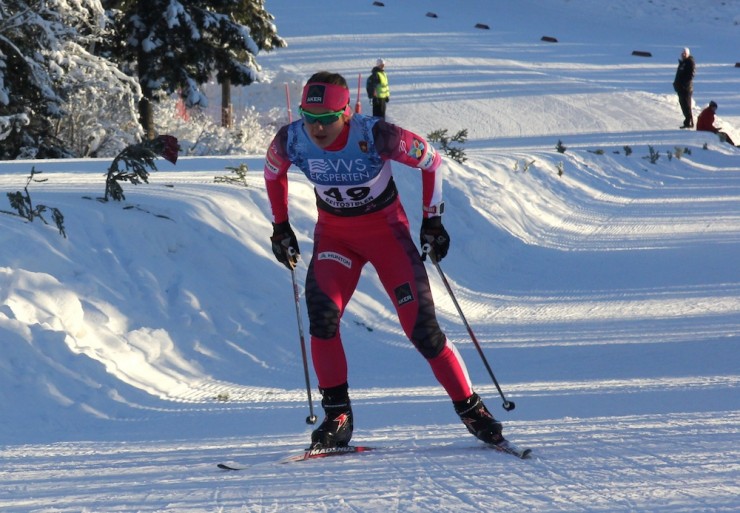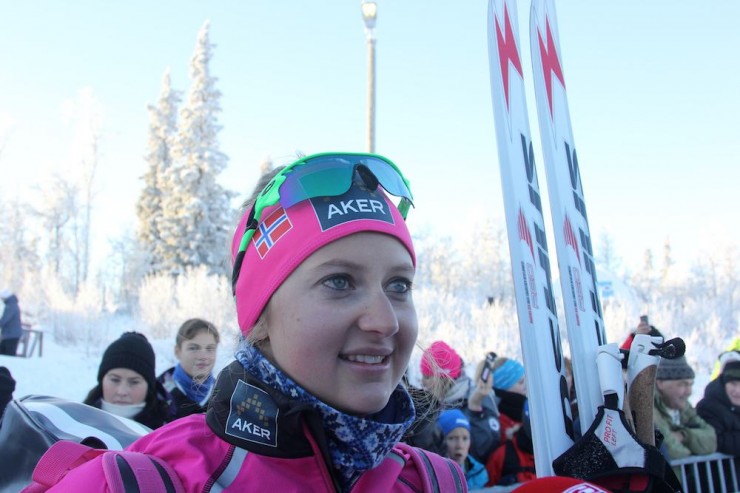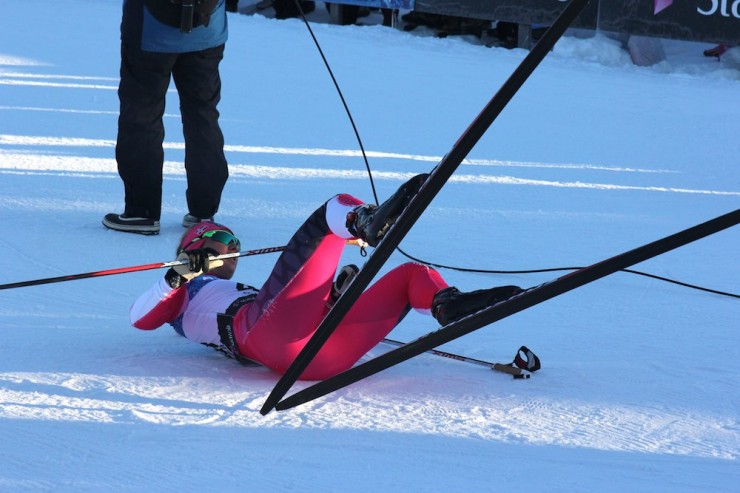
Ingvild Flugstad Østberg, a 2014 Olympic gold and silver medalist in Sochi, has worked hard at becoming worse. More specifically, the 24-year-old Norwegian national-team member says she’s less obsessed with perfection and more focused on the overall picture.

“I’ve gotten a lot of training advice through the years, and a lot of it centers around listening to your body and things in that direction,” said Østberg, widely considered one of the up-and-coming stars of the Norwegian women’s team after winning silver in the freestyle sprint at the 2014 Olympics and gold with Marit Bjørgen in the team sprint.
Østberg gladly shared her experience last Saturday after placing fifth in the 10-kilometer freestyle FIS race in Beitostølen, Norway.
“Maybe the best advice I’ve gotten, and something that definitely has stuck with me, is that you have to go for quality over quantity,” she said. “I used to just want to do more and more and more, and thought that would be better, but what you do really matters more.
“I really have to focus on separating hard workouts from easy workouts, so that I don’t end up with everything being somewhat hard,” she added. “Then you don’t have the juice to go really hard when you want to go really hard.
“Go hard when you plan to go hard, go easy when it’s an easy workout, and the more volume you do, the more important it is to distinguish. I can understand that people who just work out whenever they can get to it want to go somewhat hard to feel that they get something out of their workout. But for those who really train a lot, it’s not the way to go,” she said.
“Go hard when you plan to go hard, go easy when it’s an easy workout, and the more volume you do, the more important it is to distinguish.” — Ingvild Flugstad Østberg, to FasterSkier on Nov. 22
Østberg also tries to focus on what she’s doing when she works out.
“Don’t waste your workout time. Think about your technique in every push, every kick and every pole plant, and make them count.”

Østberg didn’t race the 10 k classic on Friday, but saved her season debut for the 10 k skate, one of her favorite events. She finished fifth and gave herself a passing grade.
“This was a good trial, and I’ve never had my best races here at Beitostølen,” she said. “It’s still very early in the season, and I feel that I have more to offer.”
She hoped her performance Saturday combined with Sunday’s sprint (in which she went on to place fourth) would secure her a spot on the World Cup team the following weekend.
On Monday, the Norwegian national team made its formal announcement, and named as Østberg as one of 11 women on its Kuusamo World Cup team.
Inge Scheve
Inge is FasterSkier's international reporter, born and bred in Norway. A cross-country ski racer and mountain runner, she also dabbles on two wheels in the offseason. If it's steep and long, she loves it. Follow her on Twitter: @IngeScheve.



